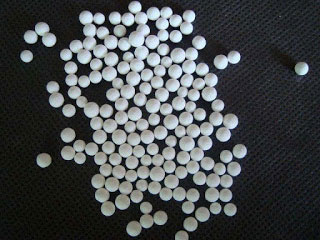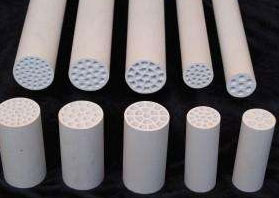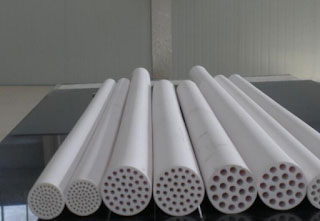The nanofiltration membrane separation method has excellent performance of intercepting divalent and multivalent ions and permeating monovalent ions, thereby achieving separation of monovalent ions from divalent and above ions. Based on this feature, nanofiltration technology can be applied to the separation of magnesium and lithium in the lithium extraction process of salt lake brine.
A preliminary study on the feasibility of nanofiltration for
lithium extraction process of salt lake brine by nanofiltration membrane was carried out. The results show that the film has a certain separation effect on magnesium, but the flux of lithium and the yield of lithium are not ideal. The retention rate of Mg2+ is only 61% to 67%, and the separation efficiency of magnesium and lithium is relatively low. Therefore, the membrane is not suitable for the separation of magnesium salt in the salt lake brine, and a special nanofiltration membrane specially developed for the separation of magnesium salt in the salt lake brine is required.
The results show that the nanofiltration membrane can separate magnesium ions and lithium ions well. Magnesium-lithium ratio and lithium concentration have little effect on the separation of magnesium and lithium, and the working pressure and permeate flow rate have a great influence on the separation effect. The separation of magnesium and lithium was 0.31, and the nanofiltration membrane showed great feasibility for lithium enrichment.
The salt lake brine has high salinity, high salt content and large concentration. Direct nanofiltration tends to cause membrane clogging and reduce membrane flux. It is necessary to dilute the brine to reduce its concentration. However, this will result in a decrease in the permeate concentration of the nanofiltration. In order to increase the concentration of lithium in the permeate, reverse osmosis can be used for concentration, and the fresh water obtained by reverse osmosis can be recycled for dilution of brine.
In summary, although the nanofiltration membrane cannot completely separate the magnesium lithium and achieve the purpose of separating and extracting lithium in one step, the magnesium-lithium ratio in the brine can be significantly reduced, and the difficulty of lithium extraction is reduced. Therefore, the nanofiltration membrane separation technology is one of the focuses of lithium magnesium extraction from salt lake brine.
Advantages of the roll-type nanofiltration membrane separation equipment:
1. It adopts cross-flow technology, is not easy to block, and has strong anti-pollution ability;
2. It has uniform pore size distribution, high separation precision and stable filtration;
3. It does not need auxiliary filter and the system runs stably;
4. It is acid and alkali resistant, easy to operate and has good regeneration performance;
5. It has a long service life, low comprehensive cost of equipment and high cost performance.
 Application Of Ceramic Membranes In Wine Industry And Its Application Prospects
01 Feb 2019
Application Of Ceramic Membranes In Wine Industry And Its Application Prospects
01 Feb 2019
 Ceramic Membrane For Traditional Chinese Medicine Production And Plant Extraction
05 Feb 2019
Ceramic Membrane For Traditional Chinese Medicine Production And Plant Extraction
05 Feb 2019
 Application Of Ceramic Membrane Equipment In Transformer Oil And Gas Separation
12 Feb 2019
Application Of Ceramic Membrane Equipment In Transformer Oil And Gas Separation
12 Feb 2019
 Ceramic Membranes Are Used In The Automotive Field Due To Their Good Performance
27 Jan 2019
Ceramic Membranes Are Used In The Automotive Field Due To Their Good Performance
27 Jan 2019


 +86-25-58849045
+86-25-58849045 
 No. 9 Yuansi Road, Pukou, Nanjing, Jiangsu, China 211808
No. 9 Yuansi Road, Pukou, Nanjing, Jiangsu, China 211808